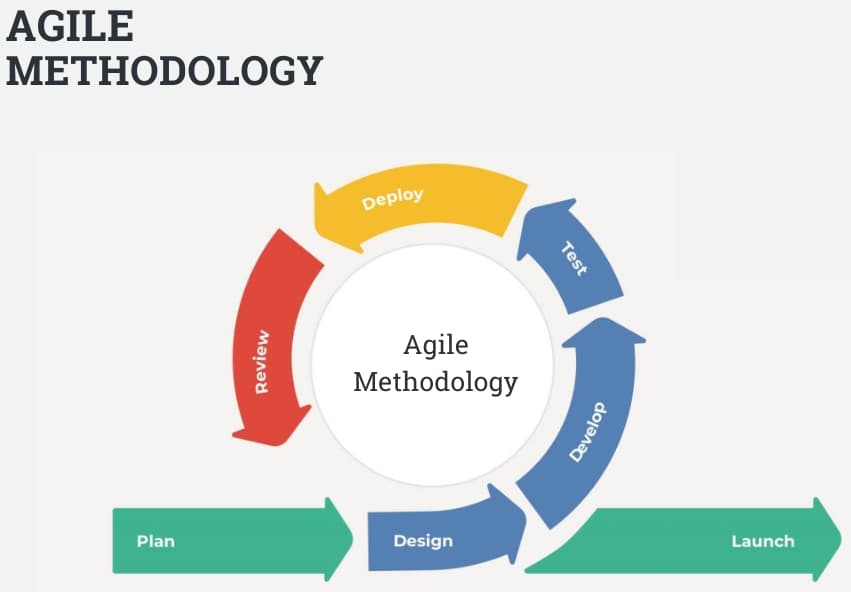
Choosing a project management framework
Feeling stuck on which project management framework to go with? There are pros and cons to both, but finding the one that works for you and your team will ultimately lead to completing projects on time, on budget, and most importantly, just the way you thought it would.
Because these different approaches to project management are built around systems, a single project management approach should be the same, regardless of what the project is. While there will be variations within the individual approaches (Scrum is an Agile framework, for example), the way Agile works at one company is the way it will work at every company. Familiarity with your preferred project management framework can be a useful “nice to have” when looking at new hires.
Today, we’re going to cover a few of the most popular project management frameworks: Agile, Waterfall, Lean, and Kanban. Looking into the pros and cons of each should help you decide what you feel you must have in your framework, and what can be left behind.
Agile project management framework

Agile is probably the most popular and widely used project management framework. If you’ve ever heard about a scrum or a sprint (outside of rugby and track), you at least have a vague familiarity with Agile. It’s an iterative process, whereby you add tasks into sprints, which last a certain duration, usually two weeks. The amount of work that goes into each sprint is determined by the amount of work the team should realistically be able to accomplish. If you have a 3-person development team and have 296 hours of work that needs to be completed, you will need to decide which 240 hours of work should be prioritized.
This approach emphasizes the teamwork aspect, prioritizes communication, and is really adaptable to change. Did another non-sprint task take priority? If you’re putting something in, you’ll also need to pull something out. It’s great for development teams or other complex projects that require constant feedback and adjustment.
Pros of Agile
- It’s adaptable: Agile is a flexible approach, allowing for adaptation and change as the project progresses.
- It encourages collaboration: Agile is big on cross-functional teams, which encourages people to work together and communicate.
- Agile prioritizes customer satisfaction: When customers are involved at the outset, there is a much greater chance they will be happy with the end product.
Cons of Agile
- It’s more difficult to plan and budget: The iterative approach can make planning and budgeting a bigger challenge.
- Agile might not be great for projects on a deadline: see again the iterative approach; continual tweaks and updates aren’t great friends with tight deadlines.
- Management of it requires experience: Agile has some pretty tried and true methods that work, as long as they’re being employed by someone with the experience to know what’s what.
Waterfall project management framework

If your project doesn’t have well-defined requirements from start to finish, or doesn’t have a clear goal in mind, then we have one piece of advice for you: don’t go chasin’ waterfalls (SORRY, I HAD TO). The Waterfall methodology is very linear and sequential, based around the idea that once one subset of the project is done, you move on to the next one. You don’t iterate through changes, you build and ship. So if you do have a clear goal and a set deadline, Waterfall just might be the framework for you.
Pros of waterfall
- Waterfall is simple and straightforward: It’s easy to understand and implement, which is why it’s popular for small teams building less complex projects.
- Budgeting and planning are easier: Lack of iteration makes it much easier to say “this is how long it will take us, and this is what that should cost.”
- Every team has clear responsibilities: The team that gathers requirements does just that. The design team handles all things design. You see where this is going…
Cons of waterfall
- It does not incorporate feedback: Without feedback and iterations, you run the risk of a client not being happy with the final product, which puts you back at square one.
- Flexibility is lacking: Changing the scope of any part of the project can be very difficult, sometimes sending the team back to the drawing board.
- Siloed teams: This linear approach doesn’t allow for much cross-functional work, which can leave individual teams feeling siloed.
Lean project management framework

The Lean project management philosophy has its roots in the manufacturing industry, where it was originally developed by Toyota. It places heavy emphasis on maximizing value and minimizing waste with the project management process. The aim is to create a smooth process from start to finish, building in the quality as you go, rather than coming back to fix it. A great example of that in the software industry is adding in unit tests when building. Does it feel tedious at first? Yes. But does it improve the overall quality and efficiency in the end? Usually. Ultimately, it’s a process that gets better the more you use it, which is great if you’re creating the same type of product or project over and over.
Pros of Lean
- Big focus on customer value: Lean project management places a premium on this, meaning when the end of the project has come, your customer should be very happy with the results.
- Collaboration is encouraged: A more cohesive team is a more productive team, and a more productive team is a Lean team.
- It minimizes waste: Waste comes in all forms, and Lean aims to cut as much waste as possible, whether that’s overly-complicated designs or a team that’s too large.
Cons of Lean
- It’s not great for complex projects: Due to the focus on continuous improvement, it’s much harder to account for project scope and budget requirements.
- Ironically, it requires a lot of resources: In order to make Lean work in a software setting, it requires time and money. It also requires the wholesale buy-in of the team, which often means a change in culture and mindset.
- Success is harder to gauge: Lean’s focus on continuous improvement and minimizing wasted are harder to quantify, which makes it more challenging to assess how successful the project is.
Kanban project management framework

For the visually-inclined among us, Kanban may be a godsend for you. Like Agile, it’s an iterative approach, and is largely based on visualizing the workflow to keep track of progress and upcoming work. Using digital or physical cards (like the post-it notes that fueled my early and enthusiastic pandemic to-do list), you make a list of tasks that need to be completed. When work is ready to be moved from one phase to another (say, from the development to the testing phase), you pull the ticket and move it.
Pros of Kanban
- It manages workflow: Seeing where every task is in its journey helps to prevent bottlenecks ensures a smoother process in completing projects. WIP limits ensure your team isn’t overworked.
- Kanban adapts easily: Because work is done one task at a time, there are no hard and fast rules about what comes next. That means adding in a new task is easy, leaving it up to the team to determine how it should be prioritized.
- It implements feedback: Like Lean, Kanban gets feedback on a loop, helping to identify problems and minimize inefficiencies so you can deliver maximum value.
Cons of Kanban
- It’s not deadline-driven: If you have a tight deadline to meet, Kanban may be too iterative of a process for your team to work with.
- Implementation can be confusing: The visual nature of Kanban isn’t for everyone, which can make it hard to implement on a software project. Pair that with the lack of clear, hard deadlines, and you’re not always going to get the buy-in you need to make it successful.
- It must stay up-to-date: Any deviation from the plan in how a Kanban board is used quickly gets a team off track.
While we realize this isn’t a comprehensive and exhaustive list of every project management framework option under the sun, we do hope it’s clarified a few things about the direction to take your project management. Ultimately, the type of project you’re working on, the goals of the project, and the resources you have available will be the deciding factors.



